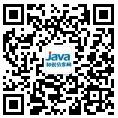| 失效链接处理 |
|
Simulation of Arena Final Project PDF 下载
本站整理下载:
相关截图:

主要内容:
Part I.
A temporary Covid-19 vaccination site is interested in looking at their staffing for their peak period, running from 10 am
to 2 pm. People arrive to the site via walking, by car, or on a roughly scheduled bus, as follows:
• On foot – one at a time, interarrivals are exponential with a mean of 3 minutes; the first walk-in occurs at
EXPO(3) min past 10 am.
• By Car – with either one, two, three, or four people to a car with respective probabilities 0.2, 0.3, 0.3, and 0.2;
interarrivals distributed as exponential with mean of 5 minutes, and the first car arrives EXPO(5) minutes past 10
am.
• By Bus: a SINGLE bus arrives once every day sometimes between 11 am and 1 pm (arrival time is distributed
uniformly during this period). The number of people on the bus varies from day to day, but it appears to follow
a Poisson distribution with a mean of 30 people.
Once people arrive, either alone or in a group, they operate independently, regardless of how they arrived. The first stop
is with one of the servers at the check-in screening counter, where people first get their temperature taken and are
asked a series of screening questions and then provide their identification and health insurance information. The
temperature and screening take TRIA (1,2,4) minutes and the review of their identification and health insurance
information takes TRIA (1,2,3) minutes; the health screening and presentation of proper identification and insurance are
done in that order, and they are performed by the same resource.
After screening, the next stop is to walk over to the injection queue and receive the vaccination; the vaccination itself
takes between 30 seconds and 2 minutes (uniformly distributed) to confirm ID again, prepare the arm for the shot, inject
the shot, place a bandage on the arm, and remind the newly vaccinated “patient” of the after-care protocol.
After vaccination, each patient goes to a recovery area with 24 socially-distant seats set up in a Wifi-enabled area. Each
patient is told to wait after their shot to make sure they do not faint or experience anaphylaxis. Even though the
patients are told to wait 15-20 minutes, their wait time is actually dependent on the type of patient arrivals: arrivals on-
foot tend to be those who have more flexibility in their schedule, and wait in the recovery area on the higher end at
TRIA(15, 20,30) minutes; arrivals by car are busy families and professionals, and have a lower tolerance for waiting at
TRIA (10, 12, 15) minutes; and finally, the patients arriving via bus follow a wait time of TRIA(11, 20, 31) minutes. Note
1 This image is not mine! Find it here: https://encrypted-tbn0.gstatic.com/images?q=tbn:ANd9GcQ3EAYZEdJgtlErfTNdbYIDevEZf1DB2wXd5Q&usqp=CAU
Page 2 of 3
that the bus will not leave the facility until everyone has been accounted for, so those only in recovery area for 11
minutes must just really want the best seat on the bus .
Queueing at each of the service stations (screening, injection, and recovery area) is allowed (the queue line is marked
for social distancing) and all have a FIFO discipline. There is a travel time of EXPO(30) seconds from each station to all
but the exit door- entry to screening, screening to injection, injection to recovery area. After recovering, the travel time
from recovery waiting area to the exit door is EXPO(1) minute.
The servers at both screening and injection area have a single break that they can “share” on a rotating basis. More
specifically at 10:50 am, 11:50 am, 12:50 pm, and 1:50 pm, one server from each station goes on a 10-minute break; if
the person due to go on break at a station is busy at break time, they finish serving the patient but still have to be back
at the top of the hour (which means the break could be shorter than 10 min, unfortunately).
Staffing is of concern for this vaccination site. Currently, there are six servers at the screening intake area, but only two
injectors at the injection area throughout the 4-hour period.
Part 1
Build the model above, specifically using Stations, for a period of 30 days (replications). Provide a basic animation using
Stations/Routes from the Animation tab. Choose “humanoid” entities. It may be helpful to choose a different entity
picture for each arrival type to help you verify your model.
Observe the following:
• average and maximum queue length in each queue
• average and maximum time in each queue
• total people vaccinated (meaning, post recovery and have left the system)
• total time in system by arrival type
Note: Include a 95% confidence interval for all averages. You do not need to provide a confidence interval for “max”
values. Interpret your results.
Part 2
Since staff knows that the bus arrives sometime in the middle 2 hours, they are considering a variable staffing plan that,
for the first and last hour would have three resources at screening, and for the middle 2 hours, they would have 9 at the
screening area. Similarly, for the vaccination area, the staff would have just one injector for the first and last hour, and
for the middle 2 hours, there would be 3 injectors to combat the bus crowd. Note that the same breaks as in Part 1 still
apply. Assume this change would be done by shuffling the existing resources; in other words, the total payroll cost is the
same for either staffing plan and cost is not a consideration.
Observe the following (for 30 replications):
• average and maximum queue length in each queue
• average and maximum time in each queue
• total time in system by arrival type
• total people vaccinated (meaning, post recovery and have left the system)
|




 苏公网安备 32061202001004号
苏公网安备 32061202001004号



